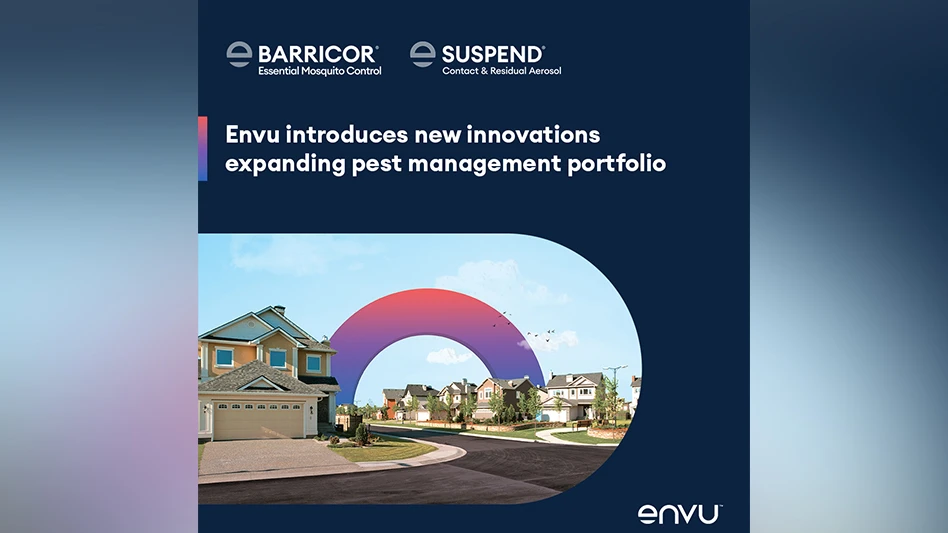 Pete Markham has seen just about everything in his 30-plus years as a bird management professional. That includes the 435,000 pounds of pigeon droppings he once removed from a manufacturing plant flat roof and an oil refinery that shut down at a cost of $20 million per day due to acidic bird droppings destroying wiring.
Pete Markham has seen just about everything in his 30-plus years as a bird management professional. That includes the 435,000 pounds of pigeon droppings he once removed from a manufacturing plant flat roof and an oil refinery that shut down at a cost of $20 million per day due to acidic bird droppings destroying wiring.
Through the many years and the countless challenges, Markham has discovered one immutable fact about managing birds in commercial settings: just when you think you have it down pat, the birds figure out a way to surprise you. "I used to have a full head of hair and I used to sleep well, but if you get into this kind of work it will keep you up nights trying to figure it out," said Markham, who shared his expertise during a seminar at PestWorld 2010, the National Pest Management Association's annual conference.
More than meets the eye. Markham's message to pest management professionals was clear: Bird work can be lucrative, but to do it well requires hours of work, plenty of resolve and very careful bidding. "All bird jobs, when you first look at them, you say, 'Wow I'm going to make a lot of money with a little bit of time.' It doesn't work that way," Markham said.
Take, for example, the time Markham was called to move 300,000 crows from a college campus. Every weekend the massive flock descended upon the school to feed on scraps left by the late-night partying of thousands of college kids. Wanting a "green" solution, the city government had been using a machine that mimicked crow distress calls. "But the distress calls actually caused the crows to fly in," he said. "It's like if you hear your child crying, what are you going to do? You are going to go to your kid."
|
Avian-Borne Diseases: A Real Threat We all know that pest birds can cause disease, but your potential clients, and maybe even you, might be prone to discount such threats. "C'mon, a couple pigeons aren't really that big of a deal, right?" Dead wrong, said Pete Markham, owner of A-Mark Bird Management. "I just came from a plant where an individual had to have a double-lung transplant as a result of cleaning up a bird roost," Markham said during a presentation at PestWorld 2010. Further, Markham also encountered a manufacturing plant where bird problems led to 11 employees contracting Histoplasmosis, two of whom died from the respiratory disease. The average two pigeons, in a 24-hour period, will defecate between 55 and 73 times, Markham noted. "They are like feathered PEZ dispensers, they just never stop, and it doesn't take long for all that defecation to essentially become hazardous waste." In fact, Markham reported, it only takes about two inches of droppings, plus a cycle of damp and dry conditions, to encourage the growth of fungal spores that lead to diseases like Histoplasmosis and Cryptococcus. "So it doesn't take a lot of birds, it just takes them to be in the right place." Accordingly, Markham stressed the importance of bird waste removal and sterilization—a money-making opportunity for pest management professionals — but cautions that the work requires smart use of protective equipment, such as respirators, and antimicrobial solutions, such as Microban. |
So Markham and his team implemented a multi-faceted approach, combining pyrotechnics, lasers and nets to convince the crows to move on. Success required persistence, late nights and plenty of cunning. "In a lighted area, crows will fly all night long. You can run them off but within an hour, the entire flock will come back. So if you are going to take on a job like this, you have to be prepared to work seven days a week. You are going to need someone there every night until you move that flock and sometimes it will take months," Markham said.
And never underestimate the IQ of a bird's wild instincts, Markham cautioned. "The bird will recognize you, your car, your uniform, your hard hat and your patterns. As soon as you drive in, the flock will disperse. But as soon as you drive away, they'll come back. So on this job, and this is a true story, we had to hide our vehicles, park them in remote locations, change our uniforms and walk in different directions."
Lessons learned. Markham's career chasing birds began three decades ago at Eli Lily Pharmaceuticals, where, as corporate pest management specialist, he was responsible for keeping bird debris from contaminating batches of ultra-sensitive pharmaceuticals. In 1986, Markham started his own firm, A-Mark Bird Management. He's worked extensively with the U.S. Department of Agriculture and the U.S. Fish and Wildlife Service and is a regular instructor at the American Institute of Baking. A frequent speaker, Markham advises all pest management professionals he encounters to thoroughly consider all the implications of a bird job before they take it on. "There is a lot you have to deal with. From the public relations implications and permit requirements to the inherent risks of working in high places," Markham said. What's more, bird jobs often demand an integrated approach where multiple techniques — ranging from the ages-old pellet gun to a high-tech exclusion system — must be wisely combined for maximum effect. "I've worked all over the world and I have found that every bird management product will work at one point or another, but everything you use will also fail at one point or another. So when you attack a bird job, you always attack it from different directions. No product is a silver bullet."
Translation: Don't sell yourself short. "Calculate the amount of time, money and equipment you think it is going to take and then double it. Once you get into a bird job, you can't quit."
|
Vultures: The Next Big Pest Bird?
"It's a monster problem. Vulture populations are really starting to increase and it's an issue in commercial and high-rise residential buildings," Markham said. Not only does the presence of vultures generate complaints in public areas and apartment buildings, their urine and feces are strongly acidic, meaning they can do damage to surfaces they're roosting on. And let's face it; managing a population of big, gnarly-looking, high-flying "buzzards" is a completely different game than keeping a few starlings out of a Walmart. Compounding the challenge is the fact that several vulture species are protected under the Migratory Bird Act, meaning improper control techniques, such as killing a vulture without a permit, could result in steep fines or, worse, jail time. |
The author is a contributing writer to PCT magazine and can be contacted at ssmith@giemedia.com.

Explore the September 2011 Issue
Check out more from this issue and find your next story to read.
Latest from Pest Control Technology
- How to Get Rid of Odorous House Ants
- Massey Services Promotes Herndon to Director of Sales for Multi-Family Division
- NPMA Announces First Recipients of NPMA PRO Certified Credential
- Pestmaster of the Hudson Valley Acquires Catskill Animal Damage Control
- Photo Slideshow: Ant Identification Tips
- Video: Top 10 PCT Photo Contest Finalists
- UF/IFAS Study Reveals Boats as Perfect Vessels for Global Termite Spread
- Pest Control Consultants (Iowa) Earns Pinnacle Performance Award

 Think of pest birds and you'll likely conjure images of congregating pigeons or an annoying flock of Canada Geese leaving a mushy trail of droppings in their wake. But the fastest-growing bird problem may be vultures, said Pete Markham, owner of A-Mark Bird Management.
Think of pest birds and you'll likely conjure images of congregating pigeons or an annoying flock of Canada Geese leaving a mushy trail of droppings in their wake. But the fastest-growing bird problem may be vultures, said Pete Markham, owner of A-Mark Bird Management.




